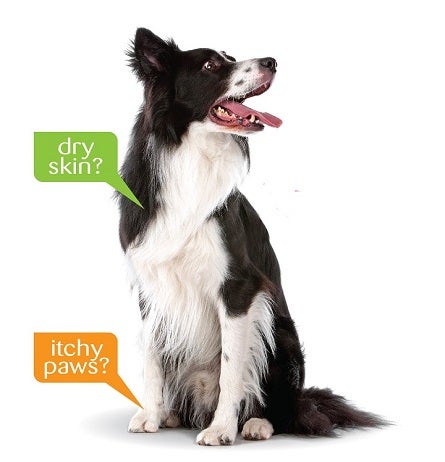March 22, 2017
Q&A: Does Your Pet Have Seasonal Allergies?
Pet Seasonal Allergies
If you’re someone with seasonal allergies, you may be used to the influx of uncomfortable symptoms that arrive with the changing of the leaves in autumn and the sprouting of the grass in the spring. What you may not know is that it’s possible for your dog or cat to experience environmental allergies as well. Like us, pets’ allergies tend to flare up during the changing seasons. Below, Wellness veterinarian Dr. Al Townshend delves into this topic, answering some of the most common questions pet parents have about allergies in dogs and cats.

Q. Why can a pet’s allergies become worse in the fall or spring months? What environmental factors are at work during these times?
A. There are higher levels of environmental allergens in many parts of the country during the fall and spring months. In the fall, many common weeds such as Ragweed and Goldenrod are pollinating. Mold allergies can also arise in the fall as leaves and compost piles accumulate at the end of the growing season. In the spring, the majority of plants are producing pollen. Reactions to these allergens can be exacerbated by the dramatic shifts in temperature and moisture levels occurring during the changing seasons.
Q. What are some of the symptoms of seasonal allergies in dogs and cats?
A. The symptoms of seasonal allergies are very similar to those of food allergies and commonly include intense itching and scratching, hot spots, runny eyes and nose, sneezing and dry and flaky skin and coat.
Q. Is there a way to distinguish between environmental allergies and food allergies in pets?
A. It can take some experimenting to determine the main cause of your pet’s allergies. The big difference between the two types of allergies is that food allergies will occur for as long as a pet is on the food that she is allergic to, while environmental allergies are typically worse at certain points throughout the year.
To narrow down the type of allergy your pet has, keep a record of the pet’s symptoms. Make note of any symptom changes that coincide with changes in diet or season. If your pet’s food remains the same but her itchy skin only occurs in fall and spring, you’re likely dealing with an environmental allergy. If your record shows that your pet’s allergy symptoms are consistent year-round, we recommend working with your vet to try a different food (Wellness Simple Limited Ingredient formulas may help) or remove one potential environmental allergen. Although most environmental allergies are seasonal, some can occur year-round. Allergies to perfumes, feathers, cigarette smoke, flea & tick control products and even certain fabrics have been reported in pets. Whether testing for a food or environmental allergy, be sure to test one variable at a time and allow a few months for results as it can take that long for the immune-response to subside once the allergen is removed.
Q. What are some of the steps pet parents can take to remedy pets’ seasonal allergies?
A. If you determine that your pet has seasonal allergies, there are some steps you can take. Most seasonal allergens are difficult for dogs to completely avoid, as keeping them inside all the time is impractical. However, you can:
- Keep windows closed when environmental allergens are at their highest concentration
- Give your dog or cat regular baths with a mild cleanser which washes away allergens clinging to the coat
- Wipe paw pads down when your pet comes in from outside.
- Dispose of decaying leaves (in gutters, yard, etc.) promptly to reduce mold growth
- Change your car’s cabin air filter regularly
If your pet’s seasonal allergies are still significant after taking these steps, your pet may need medication to control the symptoms.
With a bit of observation and experimentation, you can get your pet’s allergies under control and help her feel more comfortable all year long.





